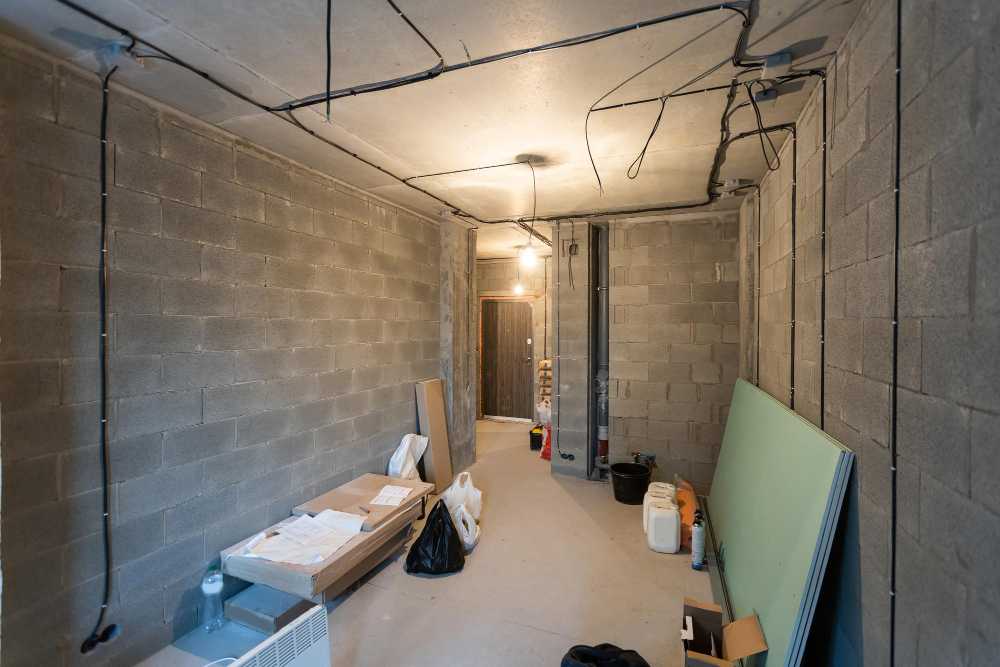Interior Design in Office Renovation: A Guide for Contractors
Office renovation is not just about updating a space; it’s about transforming an environment to better reflect a company’s brand, enhance productivity, and ensure employee well-being. At the heart of this transformation is interior design. As an office renovation contractor, understanding the intricacies of interior design is crucial to delivering spaces that meet clients’ needs and exceed their expectations.
The Role of Interior Design in Office Renovation
Interior design in office renovation goes beyond aesthetics. It involves the strategic planning of space, the selection of appropriate materials, and the integration of technology to create functional and inspiring work environments. Contractors must consider factors like lighting, acoustics, ergonomics, and sustainability when designing office interiors.
- Space Planning: Effective space planning is the foundation of any successful office renovation. It involves analyzing the available space and determining how to best allocate it according to the client’s needs. This might include creating open-plan areas for collaboration, private offices for focused work, or meeting rooms equipped with the latest technology.
- Lighting: Lighting is a critical element in office design. Natural light boosts productivity and morale, while artificial lighting needs to be carefully planned to avoid glare and ensure energy efficiency. Contractors must work with lighting designers to select fixtures that complement the overall design while serving the functional needs of the space.
- Acoustics: In an open-plan office, managing noise levels is vital. Poor acoustics can lead to distractions and reduced productivity. Incorporating sound-absorbing materials, such as acoustic panels or carpeting, can help create a quieter, more focused work environment.
- Ergonomics: Ergonomic design is essential for employee health and productivity. This includes selecting furniture that supports good posture, providing adjustable workstations, and ensuring that the layout allows for easy movement and accessibility.
- Sustainability: More businesses are seeking eco-friendly office renovations. Contractors should be knowledgeable about sustainable materials, energy-efficient systems, and environmentally friendly practices. This not only benefits the environment but can also reduce operating costs for the client.
Key Elements of Office Interior Design
When renovating an office, several key elements come into play. Understanding these elements will help office renovation contractors deliver designs that are both functional and aesthetically pleasing.
- Color Schemes: The choice of colors can significantly impact the mood and functionality of an office. For example, blue tones are often used to create a calm and focused environment, while vibrant colors like orange and yellow can stimulate creativity. It’s important to work with clients to select a color scheme that aligns with their brand and goals.
- Furniture Selection: Furniture is a major investment in any office renovation. It should be durable, comfortable, and in line with the overall design concept. Contractors should guide clients in choosing pieces that not only look good but also enhance productivity and well-being.
- Technology Integration: Modern offices require seamless technology integration. This includes everything from data cabling and power outlets to video conferencing equipment and smart office systems. Contractors must ensure that these technologies are integrated in a way that doesn’t disrupt the design flow.
- Branding: An office space should reflect the company’s brand. This can be achieved through custom design elements, such as branded colors, logos, and artwork. Contractors should work closely with clients to incorporate branding into the design in a subtle yet impactful way.
- Flexibility: The modern workplace is dynamic, with needs that can change rapidly. Designing flexible spaces that can be easily reconfigured is essential. This might involve using modular furniture, movable walls, or adaptable lighting systems.
Challenges in Office Interior Design
Office renovation contractors often face several challenges when it comes to interior design. Being aware of these challenges can help in planning and executing a successful project.
- Budget Constraints: Clients often have tight budgets, which can limit design options. Contractors need to be creative in finding cost-effective solutions that don’t compromise on quality or functionality.
- Time Management: Office renovations usually need to be completed within a short time frame to minimize disruption to the business. This requires careful planning and coordination with all parties involved, from suppliers to subcontractors.
- Balancing Aesthetics and Functionality: While it’s important for an office to look good, it also needs to be functional. Contractors must find a balance between aesthetics and practicality to ensure the space meets all of the client’s needs.
- Client Expectations: Managing client expectations is a significant challenge. Clients may have specific ideas about the design, which may not always be feasible. Contractors must communicate effectively and provide expert guidance to ensure the final design meets the client’s goals.
- Compliance with Regulations: Office renovations must comply with local building codes and regulations. Contractors need to be familiar with these requirements to avoid costly delays or penalties.
The Contractor’s Role in Interior Design
As an office renovation contractor, your role in interior design is multifaceted. You are not only responsible for the physical execution of the design but also for ensuring that the project stays on budget and on schedule.
- Collaboration with Designers: Successful office renovations often involve collaboration between contractors and interior designers. This partnership ensures that the design is both aesthetically pleasing and structurally sound.
- Material Selection: Contractors play a key role in selecting materials that align with the design vision while meeting practical considerations like durability and cost.
- Project Management: Contractors are responsible for managing the entire renovation process, from coordinating with subcontractors to ensuring that all work is completed to a high standard.
- Problem-Solving: Challenges are inevitable in any renovation project. Contractors must be adept at problem-solving, whether it’s finding alternative materials when supplies run low or addressing unexpected structural issues.
- Client Communication: Keeping the client informed throughout the renovation process is essential. Regular updates and clear communication help ensure that the project meets the client’s expectations.
FAQs
- What is the importance of interior design in office renovation?
- Interior design is crucial in office renovation as it enhances the functionality, aesthetics, and productivity of the workspace. It ensures that the office reflects the company’s brand and meets the needs of its employees.
- How do contractors balance aesthetics and functionality in office design?
- Contractors balance aesthetics and functionality by collaborating with designers, selecting appropriate materials, and focusing on ergonomic and practical aspects while ensuring the design is visually appealing.
- What are the challenges contractors face in office interior design?
- Challenges include budget constraints, time management, balancing client expectations, and ensuring compliance with regulations. Effective communication and problem-solving skills are essential to overcoming these obstacles.
- How can an office design be made sustainable?
- Sustainable office design involves using eco-friendly materials, energy-efficient systems, and practices that reduce the environmental impact. Contractors should be knowledgeable about sustainable options and incorporate them into the design.
- Why is flexibility important in modern office design?
- Flexibility is important because it allows the workspace to adapt to changing needs. This can be achieved through modular furniture, adaptable layouts, and integrated technology that can easily be updated or reconfigured.
In conclusion, the interior design of office renovations plays a pivotal role in creating workspaces that are not only beautiful but also functional, productive, and reflective of the company’s identity. As an office renovation contractor, mastering the elements of interior design and overcoming the associated challenges will enable you to deliver projects that delight your clients and stand the test of time.



